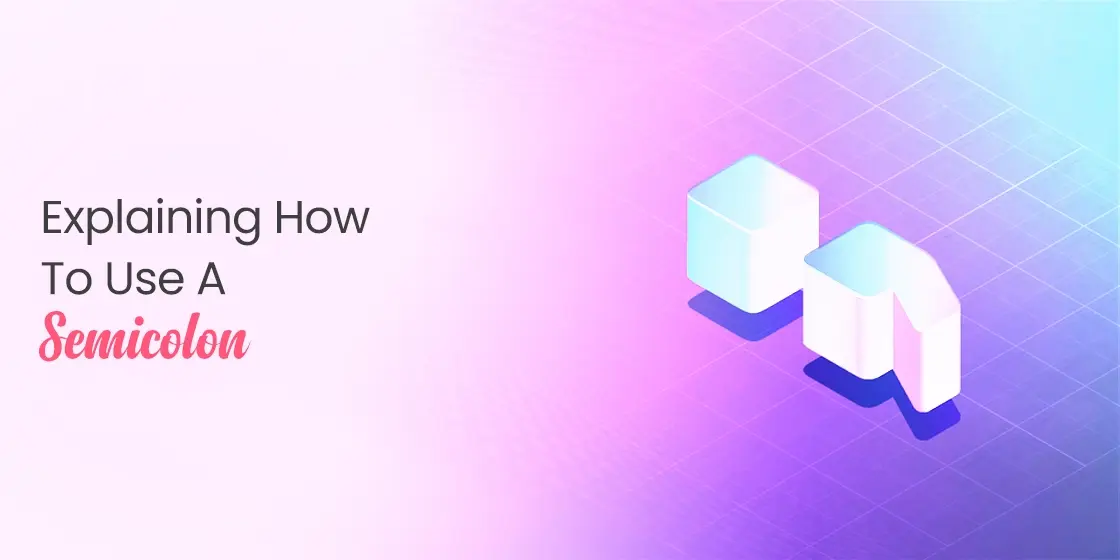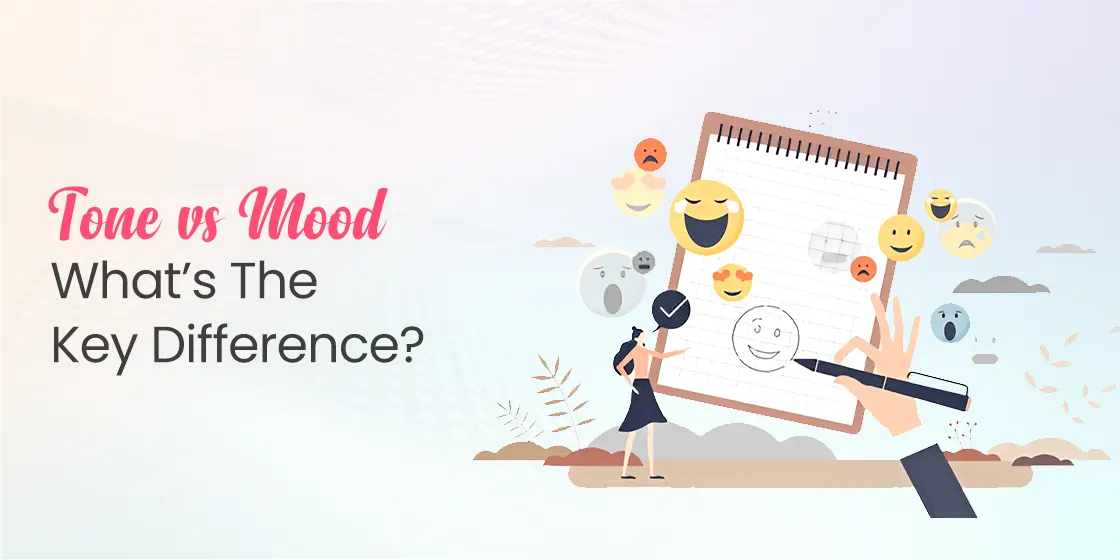Table of Content
Take a Look How Semicolons Should be Used in the Sentences
Being a writer, it is important for you to have a sound understanding of punctuation. A lot of people think that by just perfecting grammatical skills, they can become a good writer. It is certainly a wrong concept because there are other things as well that plays an important role in writing, such as correct usage of punctuation. If you do not know how to use a semicolon in an article, then you will make mistakes at different places. It definitely looks like a small thing, but if ignored, can bring a noticeable glitch in the flow of the content.
The correct usage of semicolon often comes in the basics of grammar. It is therefore expected from the seasoned writers to know the correct usage of this punctuation. Semicolon cannot be used randomly as well, because it depicts a specific type of reference in the content. Being a writer, you need to know the places where semicolons are exactly required, because you cannot force them at every other place.
In this blog, we will discuss in detail how to use a semicolon in an article properly. It will be a good read for those who want to become a professional writer and offer specialized article writing services to the clients. Let’s start from the basics understanding what is a semicolon and why it is carefully used in the articles.
What is a Semicolon?

A semicolon (;) is a punctuation mark used in English writing to link closely related ideas within a sentence. It functions as a midpoint between a period and a comma, providing a pause that is stronger than a comma but not as definitive as a period. Semicolons are often employed to connect independent clauses—parts of a sentence that could stand alone as complete sentences on their own. This punctuation mark helps writers create more complex sentences without resorting to conjunctions like “and” or “but,” allowing for a more nuanced connection between ideas.
The semicolon is primarily used in three key situations. First, it links two closely related independent clauses that are not joined by a coordinating conjunction. Second, semicolons are used to separate items in a list when those items contain internal punctuation, such as inline commas. Finally, semicolons can be used with conjunctive adverbs like “however,” “therefore,” or “nevertheless” to connect independent clauses in a compound sentence.
In writing, semicolons help improve readability by clearly delineating related but distinct ideas. They reduce the need for overly simple or choppy sentences, allowing writers to express complex thoughts more fluidly. However, the semicolon should be used sparingly and appropriately; overuse or misuse can lead to confusing or overly complicated sentences. When used correctly, the semicolon is a powerful tool for enhancing clarity, variety, and coherence in writing.
Keep your blog fresh and engaging with our professional writers!
Engage Readers
What Makes Semicolons Confusing?
Many people struggle with using semicolons correctly because they often appear similar in function to other punctuation marks, such as commas and periods. Unlike these more commonly used marks, the semicolon occupies a middle ground; it is stronger than a comma but not as final as a period. This ambiguous nature makes it difficult for writers to determine when a semicolon is more appropriate than a comma to connect two ideas or when a period might better serve to end a thought. Consequently, confusion arises over the semicolon’s unique role in connecting closely related independent clauses or separating complex list items.
This confusion often leads to small but impactful mistakes in writing that can disrupt the flow and clarity of the content. For example, a writer might use a semicolon where a comma would suffice, leading to an awkward pause that breaks the natural rhythm of the sentence. Alternatively, they might misuse a semicolon where a period is needed, merging two sentences that should stand alone. These fluff writing errors can create a jarring reading experience, causing readers to pause unnecessarily or even misinterpret the intended meaning of the text. The subtleties of semicolon usage are such that even a minor mistake can affect the coherence and readability of a piece of writing.
The uncertainty surrounding semicolon use often stems from a lack of understanding of the specific rules governing its placement. While most people are familiar with the basic rules for commas and periods, the guidelines for semicolons are less well-known and can seem more complex. Many writers may not realize that semicolons should only connect closely related ideas without the use of conjunctions, or that they are crucial for separating items in a complex list. Without a clear grasp of these rules, writers are more likely to misuse semicolons, resulting in writing that feels disjointed or confusing.
Correct Practices to Use a Semicolon

Semicolons can be used in a variety of ways to describe some sort of reference or association in the sentence. If you do not know how to use this punctuation mark correctly, take a look at the tips defined below.
Connect Independent Clauses
A semicolon is primarily used to join two closely related independent clauses within a single sentence. In grammatical terms, an independent clause is a group of words that contains both a subject and a predicate, and it can stand alone as a complete sentence. When two such independent clauses express ideas that are closely connected in meaning, a semicolon can be used to link them, creating a smoother, more cohesive flow of thought. This allows the writer to indicate a close relationship between the two ideas without having to use a conjunction like “and” or “but.”
To clarify further, the set of words that appears before the semicolon must be able to function as a complete sentence on its own. This means it must have a subject and a predicate, forming a complete thought. Similarly, the group of words that follows the semicolon should also be a complete sentence with its own subject and predicate. Both parts should be capable of standing independently as full sentences if separated by a period. However, by using a semicolon, the writer signals that the two sentences are closely related in meaning and should be read together.
For the semicolon to be used effectively, the two independent clauses it connects must share a logical, meaningful connection. This connection can be one of cause and effect, contrast, elaboration, or any other relationship that logically binds the two ideas together. A lot of times, people use semicolons without keeping this thing in consideration. It is therefore recommended to build the clause connection properly, so that reader can understand the whole context. By using a semicolon, the writer is able to emphasize the relationship between the two thoughts, enhancing the clarity and flow of the direct response copywriting.
Use with Conjunctive Adverbs
While a semicolon is commonly used to link two independent clauses, it is not the only option available for this purpose. Coordinating conjunctions, such as “and,” “but,” and “yet,” can also serve to connect two independent clauses effectively. These conjunctions are typically preceded by a comma when they link clauses, ensuring a clear and cohesive flow in writing. By using coordinating conjunctions, writers can combine sentences in a way that enhances readability and clarifies the relationship between ideas.
In addition to coordinating conjunctions, conjunctive adverbs are another tool for joining independent clauses. These adverbs include words like “moreover,” “nevertheless,” “however,” and more others. When used properly, conjunctive adverbs help indicate a logical relationship between the two clauses, such as addition, contrast, or cause and effect. They are often preceded by a semicolon and followed by a comma to create a smooth transition between the linked thoughts, making the connection between them more explicit and nuanced.
Semicolons are particularly useful when they precede conjunctive adverbs or transitional expressions to connect two independent clauses. The semicolon not only provides a pause that is stronger than a comma but also signals a close relationship between the ideas. When used in conjunction with conjunctive adverbs or transitional phrases, the semicolon effectively ties the two clauses together, enhancing both the structure and clarity of the sentence.
Separate Items with Semicolon
The use of semicolons is particularly valuable when dealing with lists where the items are lengthy or contain internal punctuation. In such cases, semicolons help clarify the separation between items, preventing confusion that might arise from using only commas. This technique is especially useful in complex lists within sentences where each item is detailed or includes additional descriptions. By incorporating semicolons, writers can maintain the readability and flow of their sentences, ensuring that each element of the list is distinct and easily understood.
This application of semicolons is sometimes referred to as the use of a “super-comma” because it serves as a more robust tool for separating elements than a simple comma. The term “super-comma” reflects the semicolon’s ability to organize complex information clearly, making it an invaluable punctuation mark in formal writing. Whether separating clauses that are closely related or managing intricate lists, the semicolon functions as a versatile and powerful means of maintaining clarity and precision in writing.
When employing semicolons in this manner, it is essential to be mindful of capitalization rules. Generally, the first word following a semicolon should not be capitalized unless it is a proper noun or an acronym. This is because the semicolon indicates a connection between two related but distinct thoughts or list items, not the start of a new sentence. By adhering to these capitalization guidelines, writers ensure their use of semicolons is grammatically correct and enhances the cohesiveness of their writing.
Core Examples on How to Use Semicolons
Many people do not know how to write an article and use semicolons while writing big sentences. If you are also one of them, take a look at the examples given below to understand their correct usage. It will give you an idea to use semicolons in any sentence wherever the punctuation is necessary.
1. The project deadline is approaching; however, we still have several tasks to complete.
2. I have visited Paris, France; Rome, Italy; and Berlin, Germany—all beautiful cities with rich histories.
3. She loves to read classic novels; her favorite authors include Jane Austen and Charles Dickens.
4. The sky was clear and the stars were bright; it was the perfect night for stargazing in the countryside.
5. She was going to pick the laundry; however, she forgot her card back at home.
Frequently Asked Questions
| What is a semicolon? A semicolon is a punctuation mark (;) used to link two closely related independent clauses or to separate items in a complex list. It indicates a pause stronger than a comma but weaker than a period, providing clarity and structure to writing. |
| What is the difference between a semicolon and comma? A semicolon (;) links closely related independent clauses in a list, providing a stronger break than a comma. A comma (,) indicates a brief pause, separates items in a simple list, or sets off non-essential information, but does not connect independent clauses without a conjunction. |
| What is the benefit of using semicolons in long sentences? Semicolons are used to link independent clauses in a single sentence. They can be used to separate items in a complex list where commas alone might cause confusion. They help clarify relationships between ideas and improve readability. |
Final Words
That sums up our entire blog in which we have discussed how to use a semicolon correctly in sentences. It is quite a simple thing, yet many people often remain confused while using it in the article or even simple paragraphs. Some of them often misunderstand the purpose of this punctuation which eventually leads to an incorrect structuring of the content. This blog has described some important tips to let you understand how to use these semicolons properly in the content. It has also listed some examples in the end, so that you can have an idea how and where these semicolons should be placed in the sentences.

Unleash your brand story`s potential with eContentSol – your creative writing companion. We craft narratives that captivate. Ready to elevate your content game? Dive into creativity with us and let`s bring your ideas to life.


